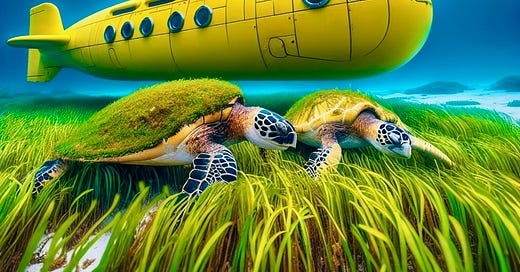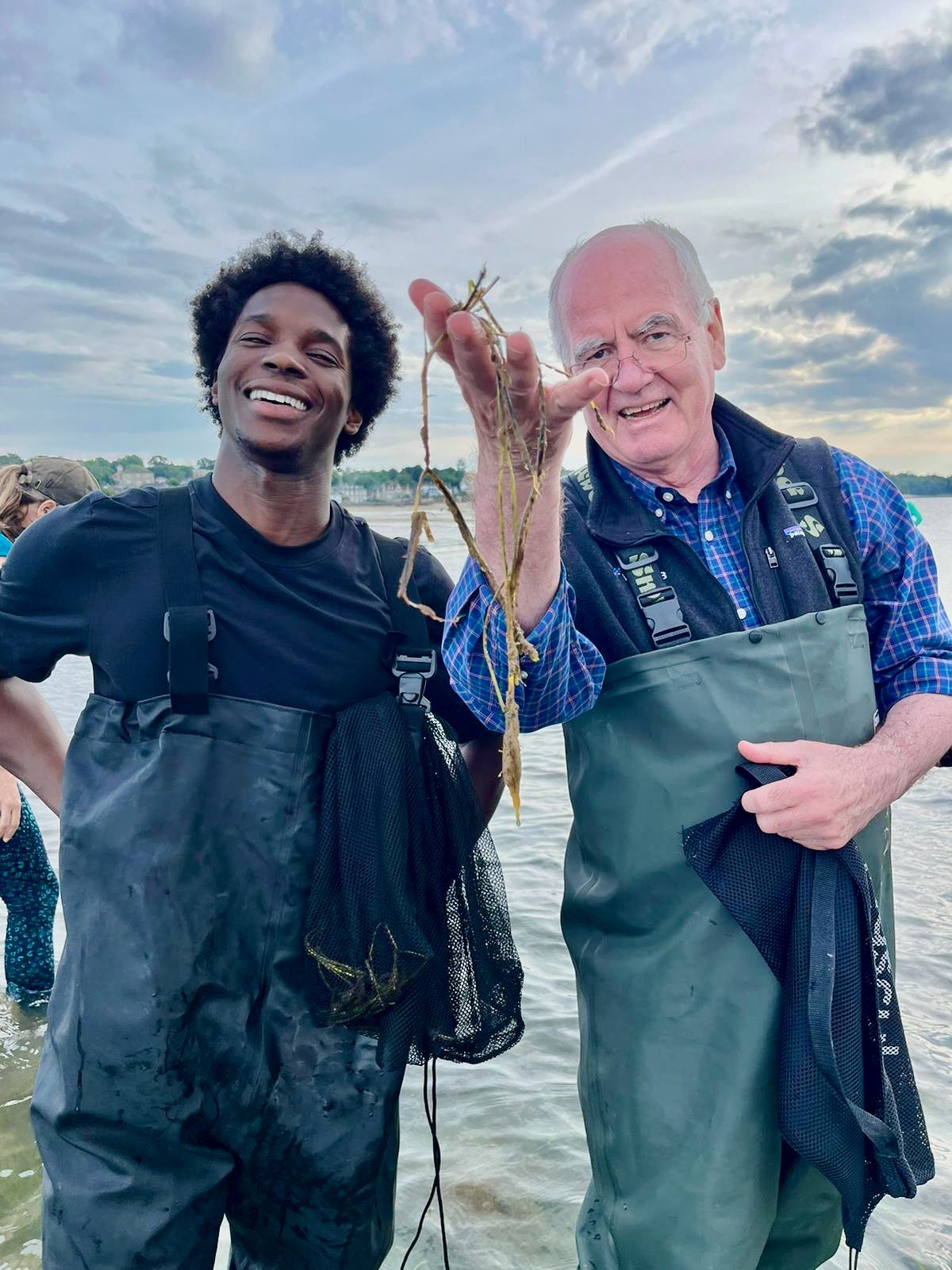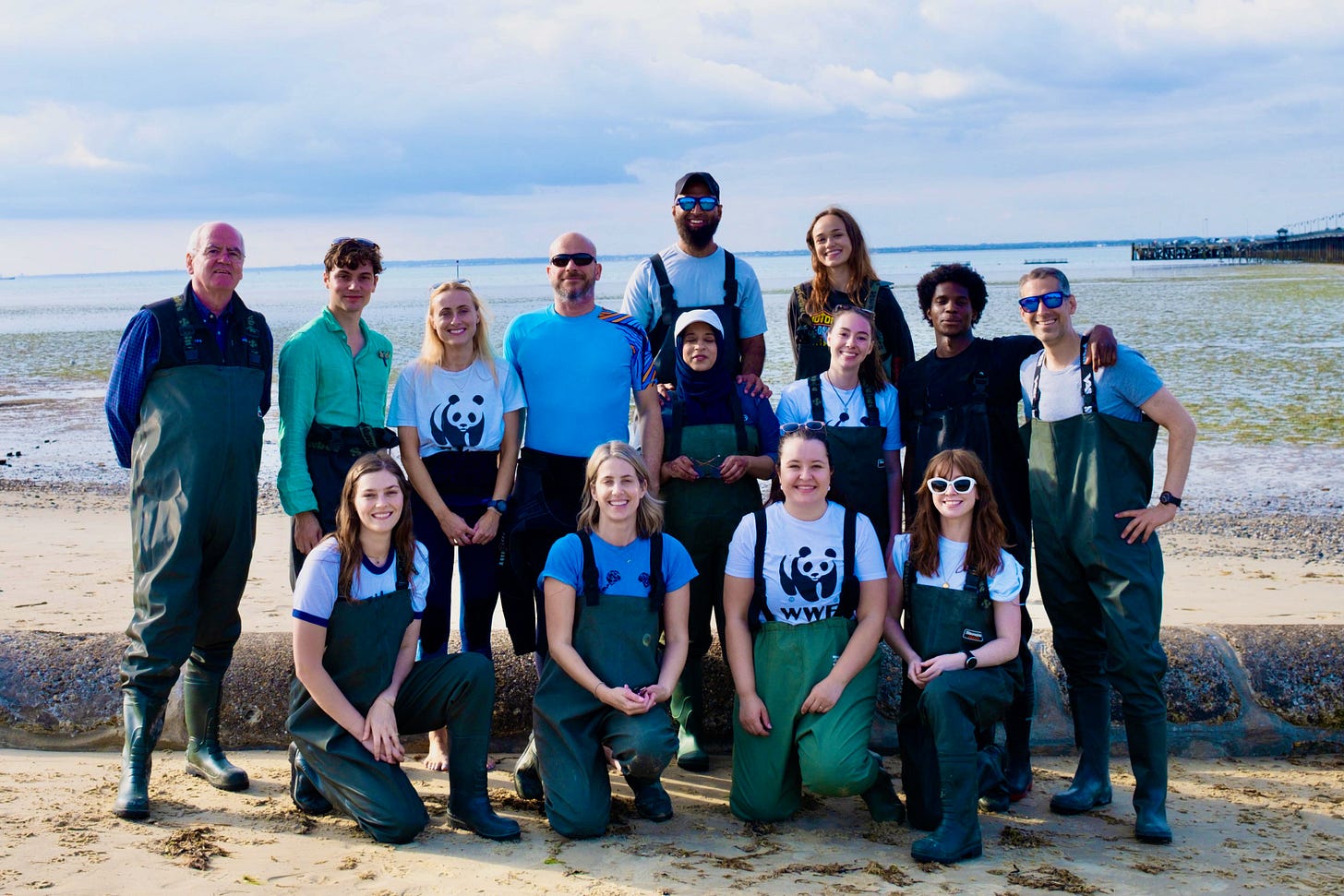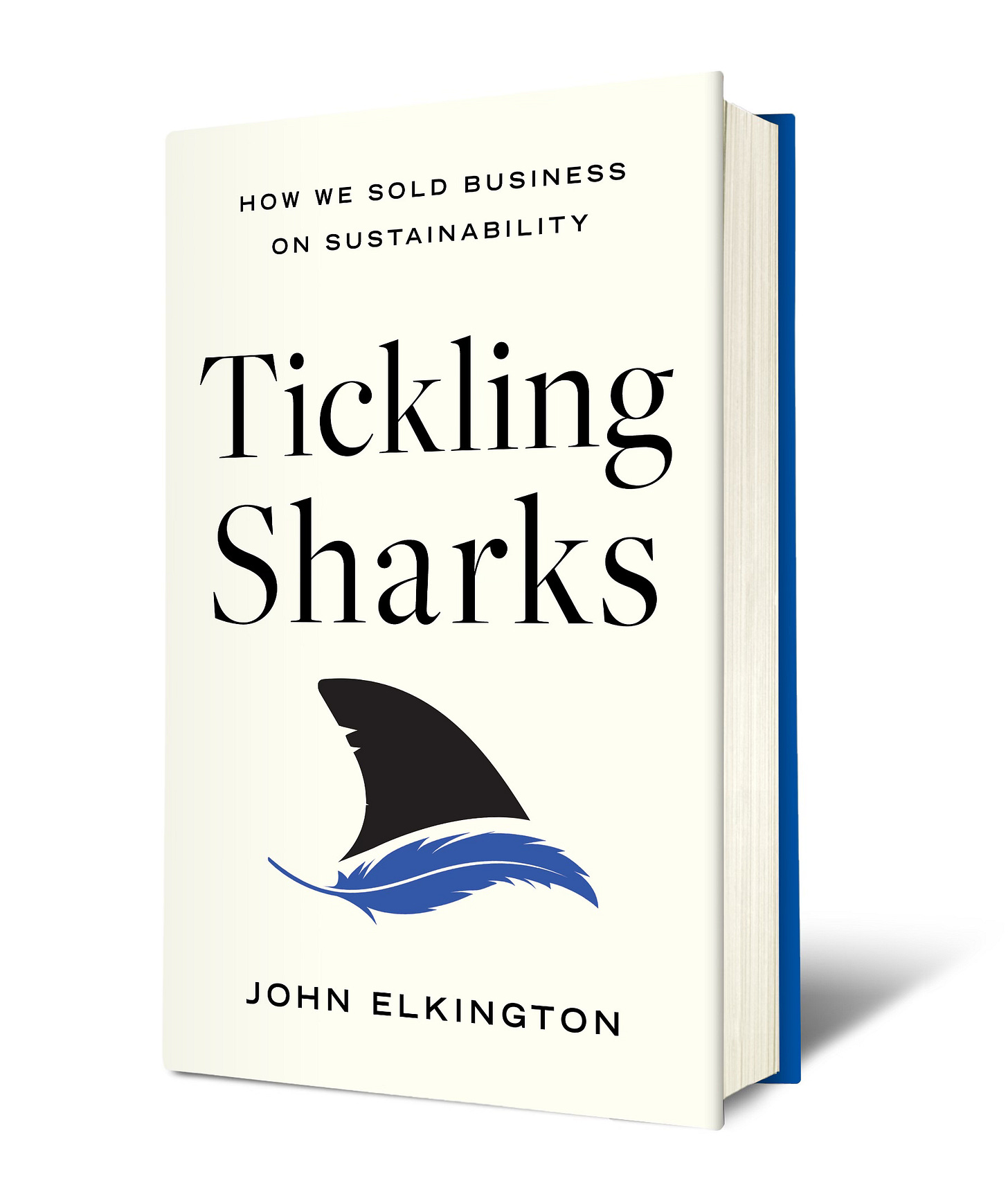How Should Markets Value Seagrass?
A day spent harvesting seagrass seeds with WWF set me wondering...
I have never harvested—or even tried to harvest—seagrass seeds before. But yesterday I was part of a WWF group that convened in the Isle of Wight, off the south coast of England, to do exactly that. And it proved significantly more challenging that I had imagined.
Still, it proved to be a fascinating bunch of people, as I describe here, among them influencers promoting positive news on Instagram, a young actor who is now a colleague as part of WWF UK’s Council of Ambassadors, and an entrepreneur helping Muslim Britons to get out in nature more.
With my own job title having been Chief Pollinator for some years, I was particularly struck by the fact that seagrass seems to be the only underwater flowering plant. And what we were looking for was hidden beneath the slightly turbid waters of The Solent: the seagrass seeds that Project Seagrass will use in its reseeding and regeneration work.
Underwater gardeners
The scale of seagrass meadow losses is mind-boggling. As the Project Seagrass team explain, “Globally, we have lost approximately 1/3 of our seagrass meadows in the last century.” So they are taking direct ac ion. They explain that they are “building a team of ‘underwater gardeners’ to replant our lost seagrass meadows.”
In the UK, where seagrass is seasonal, it flowers in spring and produces seed in summer. So around this time year, “our team of snorkelers, divers and waders are able to go out into healthy donor meadows to pick these mature seeds.” We were waders, though I would like to try the snorkelling approach at a later date.
Once the seeds are harvested and in hand, they transport them “back to our lab where they can be processed. This involves processing units that encourage excess seagrass material to rot away to leave behind our precious ‘seeds of hope’. These seeds can then be stored at our nursery in very cold and very salty water to prevent germination until we are ready to plant them.”
Planting involves a variety of methods, among them: hessian bags filled with sand and seeds, planted just beneath the surface; so-called direct injection seeding (or DIS), which involves injecting the “seed mixture into the sediment; [and the transplantation of] healthy young seedlings from a donor meadow to a planting site.”
A nagging question
Still, as we headed back to London sometime before midnight, a question kept nagging away at my brain. How do we put a sensible value on the world’s seagrass meadows—both as they are and as they might be in future?
In terms of what we are talking about here, seagrasses, as the UN explained in a recent report, “are marine flowering plants that are found in shallow waters in many parts of the world, from the tropics to the Arctic circle. Seagrass meadows are of fundamental importance to nature and people. They contribute to community well-being, whether through food security from fish production, improved quality of water filtered by seagrasses, protection of coasts from erosion, storms and floods, or carbon sequestration and storage.”
That’s the good news. The bad news is that “seagrasses have been declining globally since the 1930s, with the most recent census estimating that 7 per cent of this key marine habitat is being lost worldwide per year, which is equivalent to a football field of seagrass lost every 30 minutes. Seagrasses are among the least protected coastal ecosystems and often face cumulative pressures from coastal development, nutrient run-off and climate change.”
As WWF itself says: “One of the most incredible natural tools in the fight against the climate crisis lives underwater. Seagrass is a wonder plant that lives in shallow, salty waters around the world and can form vast underwater meadows. Seagrass beds are crucial to the health of our ocean and provide food and shelter for animals such as sea turtles, manatees, and a variety of fish. They also serve as important nurseries for endangered wildlife such as seahorses. About 2.5 acres of seagrass bed can support 80,000 fish.”
Nor is that all. WWF continues to note that “this leafy green marvel’s real superpower is the rate at which it captures carbon […]. Seagrass captures carbon up to 35 times faster than tropical rainforests. Despite covering only 0.2% of the ocean floor, the plant absorbs an extraordinary 10% of the ocean’s carbon each year.”
A higher level review of the “ecosystem services” provides by seagrass can be found here, while a critical analysis of large marine reserves off Africa suggests that seagrass meadows are second only to coral reefs, and significantly ahead of things like mangroves and kelp forests.
Great, but how do then put a value on all of this, so that we can make a stronger financial case not only for conserving the seagrass meadows that still remain but also for regenerating seagrass wherever it will grow?
We’re talking hundreds of billions
A recent study of the Caribbean put a dollar value on the many services provided by seagrasses across the region, which holds up to half the world's seagrass meadows by surface area and accounts “for about one-third of the carbon stored in seagrasses worldwide.”
In the Caribbean alone, then, seagrasses are estimated to provide about $255 billion in services annually, including $88.3 billion in carbon storage. And in the Bahamas alone, the ecosystem services provided by seagrasses are valued at more than 15 times the country's 2020 gross domestic product, according to the study published online on June 21 by the journal Biology Letters.
So I suspect that this a subject to which I will almost certainly want to return in Rewilding Markets.
And if you want to know more about the continuing evolution of my thinking, my 21st book is a memoir called Tickling Sharks: How We Sold Business on Sustainability (Fast Company Press, June 2024). Our video trailer can be found here. Available in good book stores and on Amazon, in hardback, paperback, Kindle and audio formats—the last being the first audio version of one of my books that I have voiced myself. Let me know what you think!








This is amazing, but how permanent is the carbon sequestered by the seagrass? Especially if the areas keep diminishing in size.
Precious seagrass precious ocean